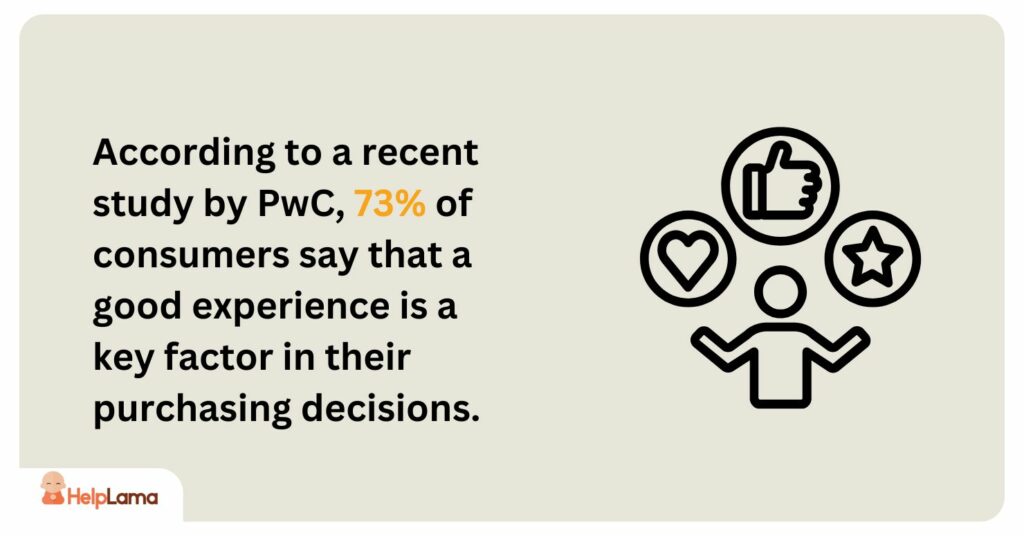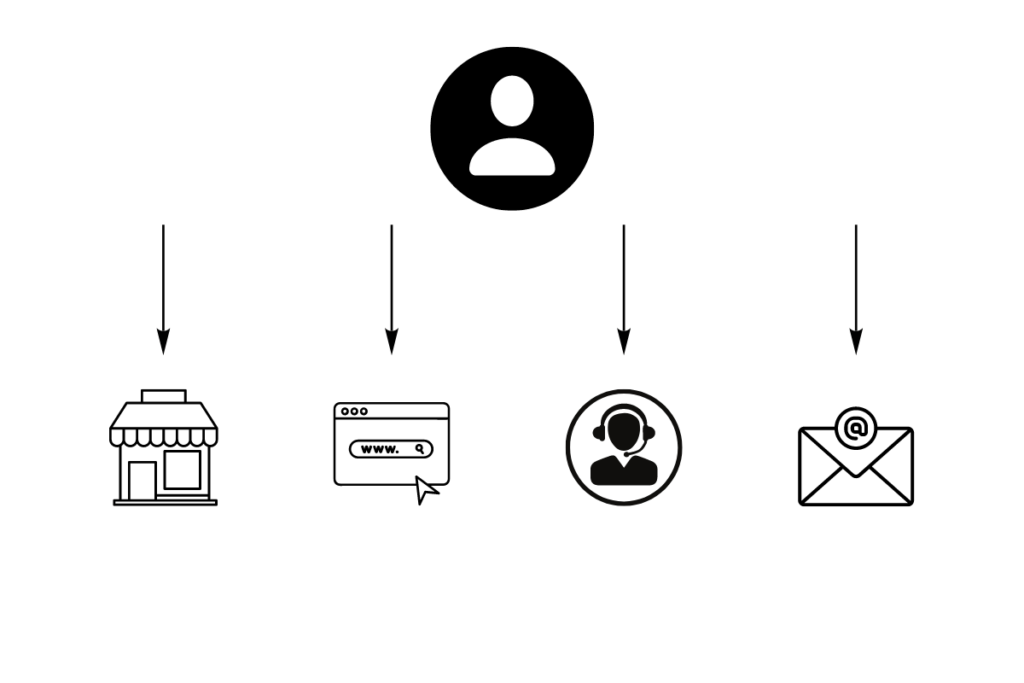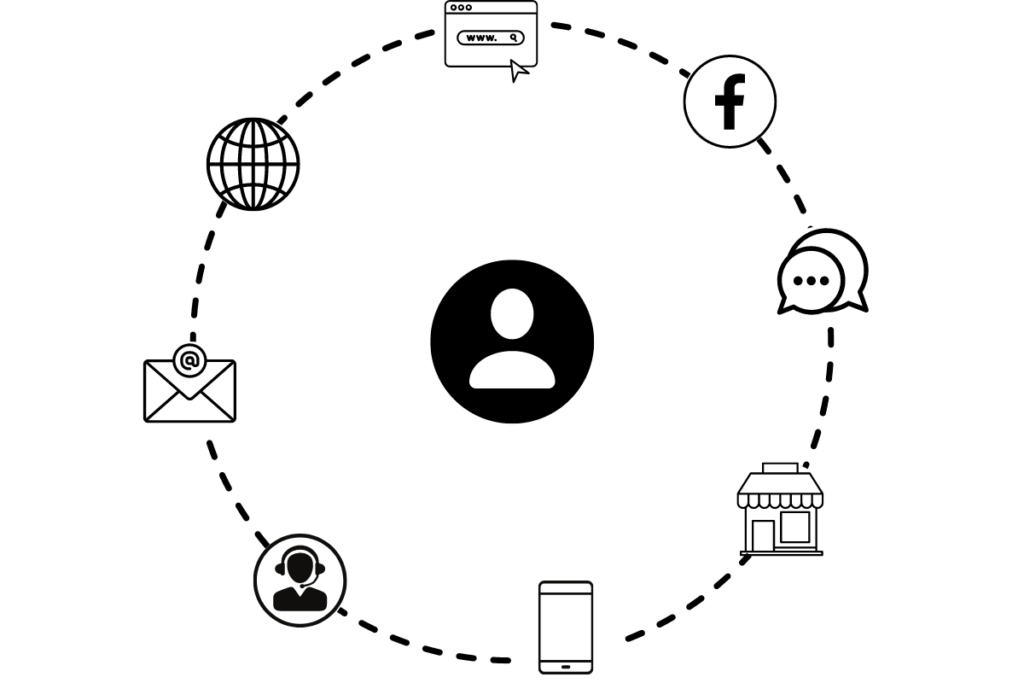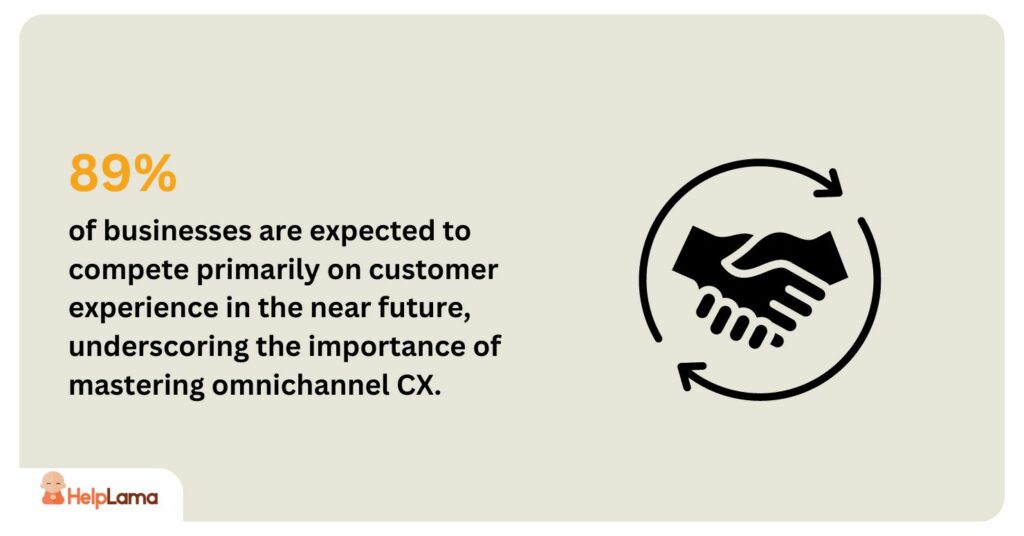Last Updated: April 2025
In today’s competitive business world, outsourced omnichannel customer experience management is crucial for delivering an exceptional customer experience (CX). Companies are turning to omnichannel strategies with customers expecting seamless interactions across multiple channels. However, managing these channels in-house can be resource-intensive and challenging, leading many businesses to consider outsourcing. This blog will explore what outsourced omnichannel customer experience management is, how to build it, and offer management tips from various sources to ensure its success.
According to a recent study by PwC, 73% of consumers say that a good experience is a key factor in their purchasing decisions.
This blog will explore what outsourced omnichannel customer experience management is, how to build it, and offer management tips from various sources to ensure its success.
Table of Contents
- Introduction
- Understanding Outsourced Omnichannel Customer Experience Management
- Steps to Build a Successful Omnichannel Customer Experience
- Multichannel vs. Cross-Channel CX vs. Omnichannel
- Managing Tips from Other Sources
- Best Practices in Outsourced Omnichannel Customer Experience Management
- Conclusion
Understanding Outsourced Omnichannel Customer Experience Management
What is Omnichannel Customer Experience Management?
The omnichannel customer experience creates a system that works together and combines with other email, social media, call center, or in-store interactions for seamless interaction. It makes sure that however customers talk to a brand, they will get service with consistency and cohesion.
Why Outsource Omnichannel Customer Experience Management?
Outsourcing omnichannel CX involves partnering with external service providers to handle customer interactions across multiple channels. Companies opt for outsourcing for several reasons:
- Cost-effectiveness: Minimises the requirement for substantial internal staffing and infrastructure.
- Expertise: Access to specialized skills and technologies.
- Scalable: Easy scale operations.
- Focus on Core Competencies: Allows companies to focus on their primary business activities.
Steps to Build a Successful Omnichannel Customer Experience
- Choose a robust CMS. Keeping up with the rapidly changing technology environment entails opting for a content management system (CMS) that offers omnichannel capabilities. The Future of CMS in Digital CXA is a proper developer-friendly tool that should allow you to:
- Build and maintain digital products correctly from all locations.
- Sum-up Data: Participate, identify, and group information based on channels.
- Develop comprehensive user personas and segments.
- Provide personalized content.
- Test user journeys with A/B testing.
- Know Your Audience: This appears a bit basic—designed for the people who will be using what you are creating—and not to mention this is part of CCUX! Collect insights on:
- Demographics and geographics.
- Your professional and personal goals.
- Various digital platform preferences and behaviors
- How an individual communicates with and uses technology
- This thorough knowledge will enable you to make highly targeted user personas and customer journeys that work.
- Design Customer Journeys: Map Out Two Kinds of Customer Journey:
- Inside your product journey, make the user’s in-product experience frictionless and natural.
- Cross-Channel Journey: Work with the Marketing and Sales team to configure an end-to-end journey across channels.
- Build Your Digital Product: Your digital product is the omnichannel strategy of what your website is to e-commerce. Supports:
- Multiple engagement options (e.g., contact forms, live chat).
- Device responsiveness.
- Starting with integrating key channels
- Build an MVP, do not spend extra resources, and concentrate on important features instead.
- Consistent branding: style guide or design system Construct a style guide to keep all brand elements consistent. This documentation will bring together the visual and verbal aspects of your brand in continuity across all platforms.
- Integrate Social Media Gradually: Start by focusing on two or three social media platforms that align with your users’ preferences and work well with your product. As your program becomes more mature, expand to other platforms that are right for you.
- Utilise email marketing. Use email for:
- Customer Communication.
- Handling support inquiries.
- Newsletters and promotional material
- Sending Transactional Messages
- Email marketing often outperforms social media in terms of engagement, so this should be an important target for you.
- Integrate Core Integrations: Add other key elements in your digital product, like CRM, to organize customer data streams correctly. All functionalities are to be kept in sync for flawless data aggregation and property, which includes:
- Create Pillar Content: Create “chapters” that can stand alone as their own kind of blog posts. Leverage a Scalable DAM System: Utilise a digital asset management (DAM) system to store and organize your content assets efficiently.
- Analyze the data and provide feedback regularly. Establish systems for continuous data analysis and customer feedback. Leverage this information to inform your strategy and continuously enhance the customer experience.
Recommended read: Handy Customer Service Scripts You Should Know
Multichannel vs. Cross-Channel CX vs. Omnichannel
To some extent, it is necessary for businesses trying to improve their customer interactions and satisfaction in the world of Customer Experience (CX). This has created an important differentiation between multichannel, cross-channel, and omnichannel strategies.
Multichannel CX: A multichannel strategy includes interacting with customers through many channels on their own. In essence, it’s a business strategy wherein the company reaches out to clients across a variety of communication channels (such as social media, live chat, email, and phone). There is no integration between the channels; they all run separately. Although it satisfies consumer demands, this causes fragmentation. For example, a consumer may initiate a social media inquiry but have to initiate the process anew when transferring to a phone conversation. This compartmentalized structure might cause inefficiencies and impede the entire client process.
Cross-channel CX: Several channels are linked to provide a more seamless customer experience in cross-channel CX. Information moves easily between the channels while they remain separate, providing a more seamless experience. When a consumer uses an app to start a service request, for instance, they may get updates via email and phone calls for additional support. Maintaining a consistent customer journey is emphasized by this strategy, which guarantees seamless channel transitions without losing context.
Customers are less likely to have to repeat themselves thanks to this interconnection, which raises efficiency and satisfaction levels. Businesses may gather and correlate data from many touchpoints with the help of cross-channel designs, which facilitates more individualized experiences and improved decision-making.
Omnichannel CX: An omnichannel strategy represents the pinnacle of customer experience, where all channels are fully integrated and synchronized, providing a seamless, consistent, and personalized experience across any device. In an omnichannel environment, channels are almost imperceptibly there. A customer might start an interaction on a company’s website, continue it via live chat, and complete it in a physical store, all reflecting a continuous, unified experience.
Omnichannel strategies emphasize a 360-degree view of the customer, utilizing data from all touchpoints to anticipate needs and personalize interactions. Although this integration requires advanced technology and data management, the return is significant. Customers enjoy a seamless experience where their preferences and history are considered throughout the journey.
Managing Tips from Other Sources
McKinsey & Company
McKinsey recommends we continue working on integrating digital and physical channels, with an increased emphasis on creating a seamless omnichannel experience. They, meanwhile, stress the value of using data analytics to help understand customer behavior and preferences.
Gartner
Gartner acknowledges the importance of moving beyond a siloed approach to customer service. They encourage utilizing AI and machine learning to improve customer interaction as well as optimize processes.
Forrester
Forrester recommends that businesses focus on personalization within their omnichannel strategies. Rather, they recommend leveraging customer data in order to deliver customized experiences that will lead your customers to engage with you more.
Best Practices in Outsourced Omnichannel Customer Experience Management
Recent research has shed light on emerging trends and best practices in outsourced omnichannel customer experience. Here are some key findings and innovative approaches that can help businesses excel in this area:
Embracing Hyper-Personalization
Deloitte points out in its study that hyper-personalization is increasingly crucial for omnichannel success. Powered by data analytics and AI, this enables companies to create these hyper-personal experiences based on customer likes. This is more than mere segmentation and refers to the need for real-time customization based on customer behavior, purchase history, interactions, etc.
Businesses can provide individual customers with specific content, personalized offers, and recommendations through hyper-personalization, making sure every customer feels valued and understood. For example, an e-commerce platform would leverage hyper-personalization to display product recommendations based on your recent browsing data and previous buying history, in turn driving increased conversion rates. Thus, businesses can gain increased customer loyalty and sales conversion.
Adopting Customer Journey Mapping
If you know what your customers are looking for in a CX, then using customer journey mapping becomes essential to help meet their needs. Companies using customer journey mapping are twice as likely to outperform their competitors in customer satisfaction (Salesforce). It consists of mapping the entire journey a customer goes through and moments that matter at all touchpoints, looking for gaps, and tweaking to be sure they are always having the best experience at every stage.
Integrating Voice of the Customer (VoC) Programs
In the form of a tool that enables businesses to gather and act on customer insights, voice-of-the-customer programs. Qualtrics research showed businesses using VoC programs enjoy a 10-15 percent increase in customer retention rates and a 20–25% reduction in service costs. VoC programs aggregate feedback from multiple channels and parse it for insight into actionable changes to customer experiences.
Leveraging Cloud-Based Contact Centers
The move to cloud-based contact centers is a further transformation of outsourced omnichannel CX. Gartner also forecasts that, by 2025, more than half of all organizations will have shifted to a cloud contact center. In contrast, cloud-based solutions are more flexible, scalable, and easier to integrate versus traditional on-premise systems, which enables businesses to conduct continuous multi-channel customer service better.
Focusing on Employee Experience (EX)
Gallup’s research strengthens the connection between employee experience and customer experience. The more employees enjoy their work and the better it is from a well-being perspective, then this translates into happier, more satisfied customers. This is especially important for third-party partners, as it can affect how engaged their teams are and whether they behave in a way that reflects your brand during customer interactions.
Conclusion
By outsourcing omnichannel customer experience management, businesses can deliver consistent and customized interactions in the customer’s preferred channel of interaction as well as concentrate on their core area. Companies can massively improve their CX and customer satisfaction by incorporating best practices like hyper-personalized communication, customer journey mapping VoC programs, cloud-based contact centers, and a better employee experience. In the future, those ways of doing business won’t cut it; businesses that want to succeed will likely either adapt by adopting more innovative strategies or fail again and go out looking for expert hands.
According to a Gartner study, 89% of businesses are expected to compete primarily on customer experience in the near future, underscoring the importance of mastering omnichannel CX.





